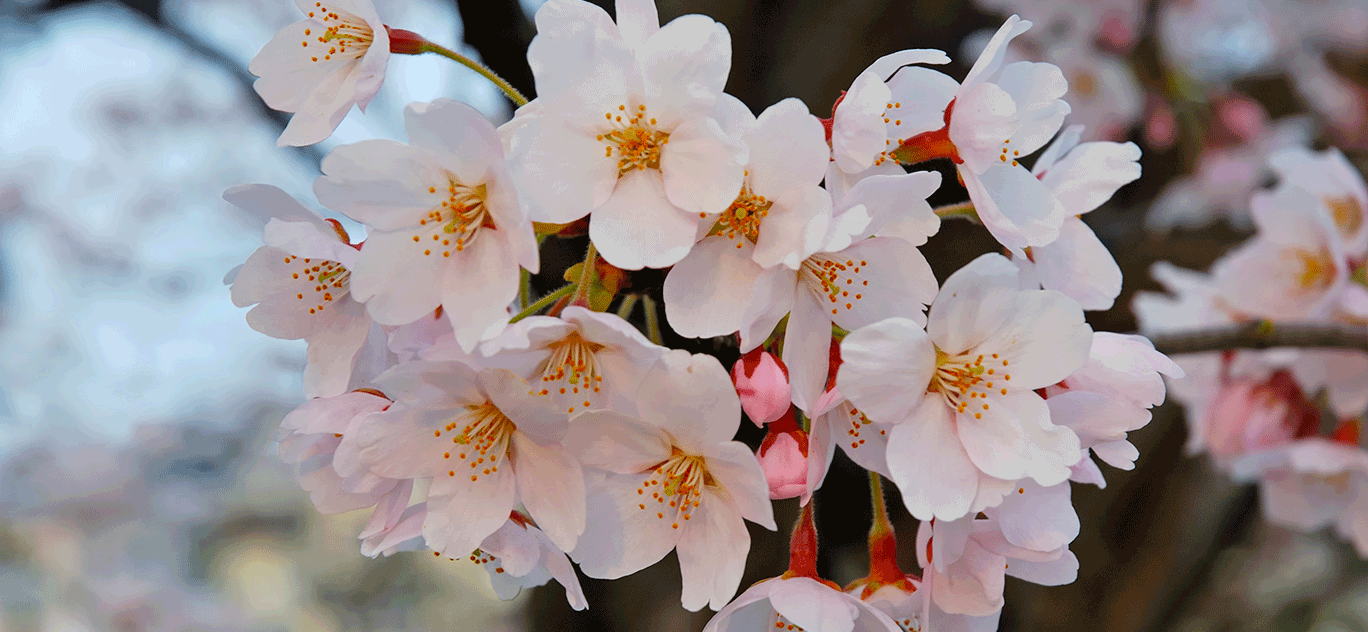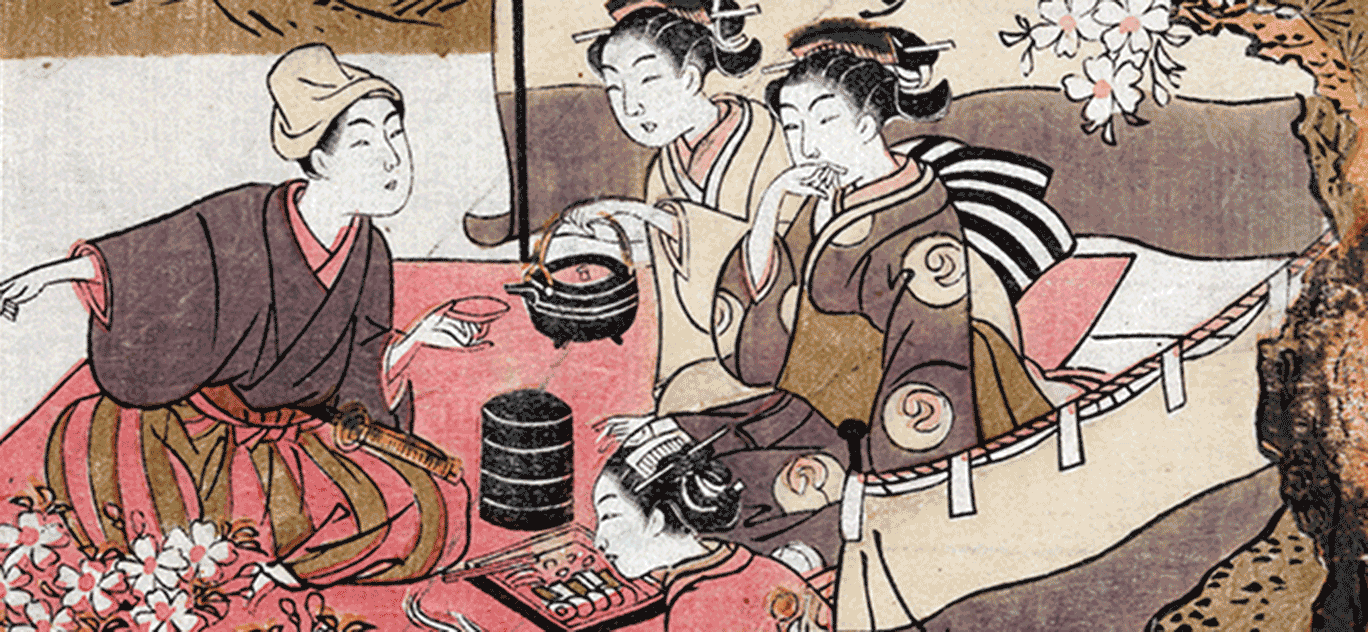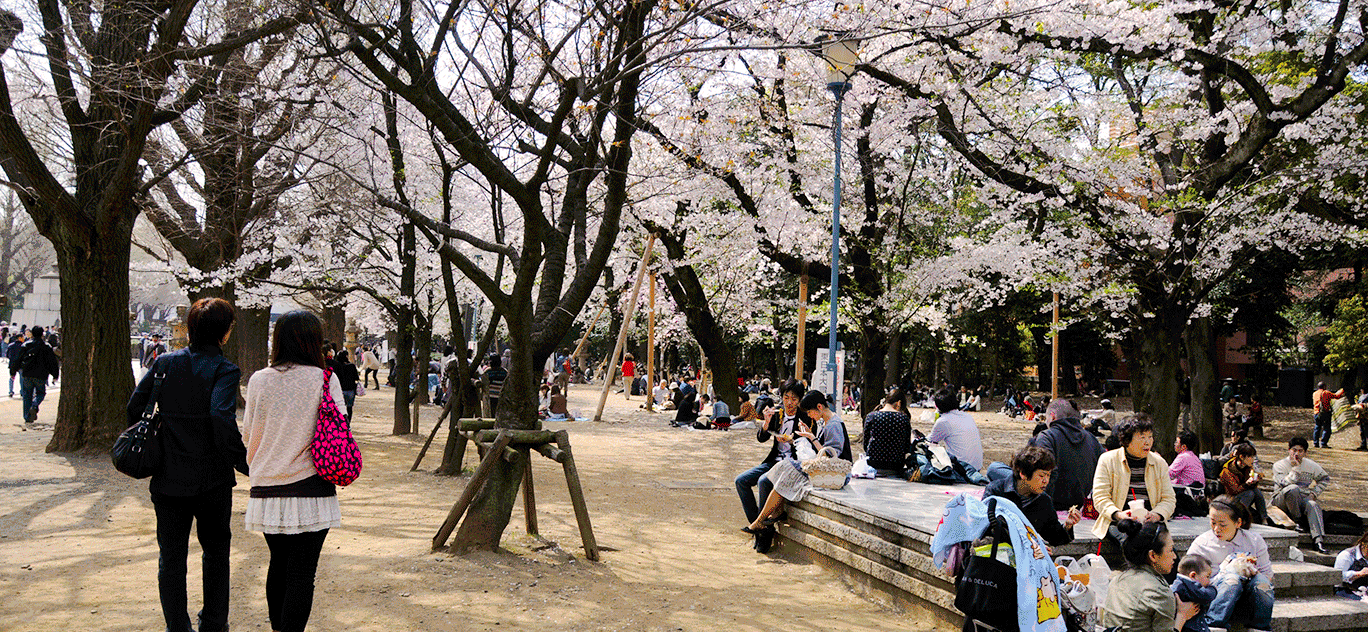The history of hanami (cherry blossom viewing)

After the cold bleakness of winter, nothing gets the Japanese more excited than the blooming of the cherry blossoms, or sakura, in spring. Not only is it an indicator that spring has officially arrived, but it’s seen as a unique part of Japanese culture dating back more than a thousand years. People flock to the parks to have picnics under the trees, or in many cases crazy drinking parties. When the wind blows, the tiny petals lightly dance through the air creating a dreamlike snowstorm of pink and white.
The classical origins of hanami
If we take the word literally, hanami just means “looking at flowers.” It’s a Japanese word that falls into a broad category of “looking at things” words – two other famous examples are tsukimi “moon viewing” and fujimi “Mt. Fuji viewing.”
As Japan’s imperial court grew in power and influence, it looked to China’s ancient cultural traditions to put itself on equal footing – at least in its own eyes. In the Nara Period (710-794), we find accounts of local aristocrats and courtiers reading Chinese poems celebrating the transient beauty of plum blossoms. However, by the Heian Period (794 – 1185), the term hanami had become synonymous with cherry blossom viewing specifically.
Hanami in the premodern era
When the Tokugawa Shōgunate was established in Edo (modern day Tōkyō) in the 1600’s, hanami had already become an inherent aspect of the warrior culture. But the shōgunate took things a step further by planting cherry blossoms in public spaces. This meant not only imperial courtiers and elite samurai could enjoy hanami, but also the commoners, like merchants and farmers. Feudal lords throughout the country copied this trend in their own domains, popularizing hanami all over Japan.
A proverb soon arose 花は桜木、人は武士, hana wa sakuragi, hito wa bushi (as for flowers, there are sakura – as for men, there are samurai). On the surface, this simply means the greatest of flowers are cherry blossoms and the greatest of humans are samurai. However, the life of a samurai was also compared to that of a cherry blossom. He might be beautiful, but his life could be cut short suddenly like the delicate flowers in strong wind. The link between samurai and sakura persists to this day, and often comes up in historical movies and TV dramas.
Modern hanami
After the abolition of the samurai class, Japan began rigorously modernizing and westernizing. It’s in this era that newspapers started announcing famous spots for hanami and the best times to go. Also, the sakura season coincided with the new school year and the hiring of new employees at companies, and so the cherry blossom became a symbol of new beginnings, rather than the fleeting existence of the samurai.
Having a picnic and drinking sake while looking at cherry blossoms is a tradition that goes back to the Heian Period. But with a convenience store 5 minutes away at most from anywhere, these days people just keep “refueling” and can party from morning to evening (and at night, parks often light up the cherry blossoms!). In fact, an old proverb has come to be associated with hanami: 花より団子 hana yori dango – literally “sweets over flowers.” The implication is that some people don’t come to enjoy the sakura as much as for the wild partying.
When to do hanami?
Every year is a little different and so the Japan Meteorological Agency uses a complex equation and closely monitors 59 sample trees nationwide to predict – and subsequently update in real time – the so-called Cherry Blossom Front. This tracks the blooming of sakura from south to north and is often used by the Japanese to plan weekend trips for multiple hanami experiences. The season usually begins in the middle of January on the island of Okinawa, reaches Tōkyō and Kyōto at the end of March, and ends on the island of Hokkaidō in the end of April or beginning of May. Theoretically, you could do hanami every weekend for three months if your liver was up to the challenge.
Main image by Koichi Shibata via Wikimedia Commons under CC





